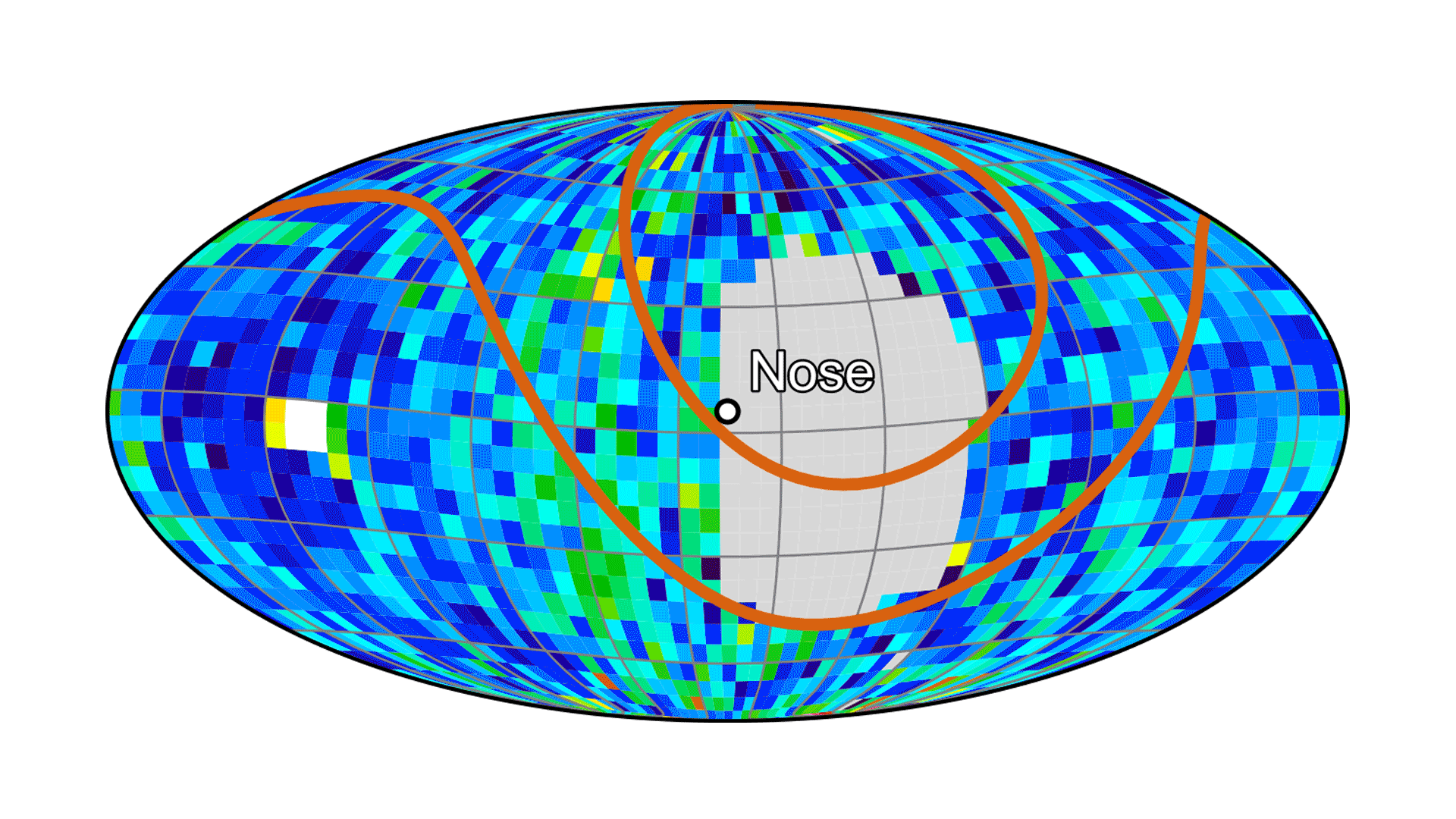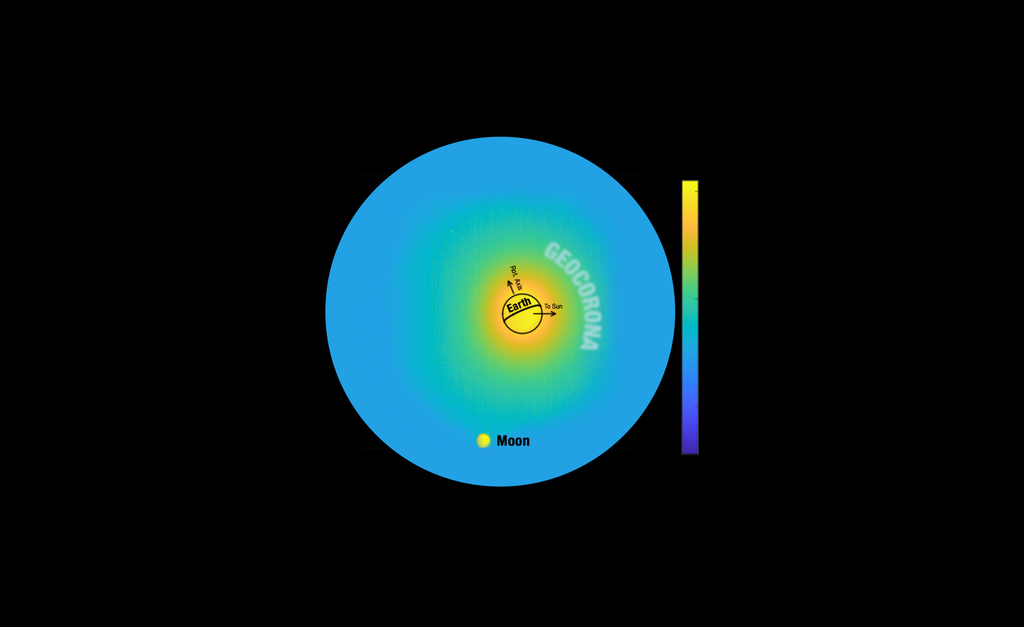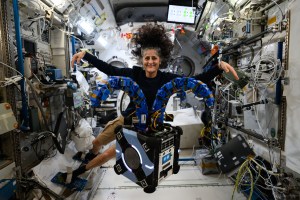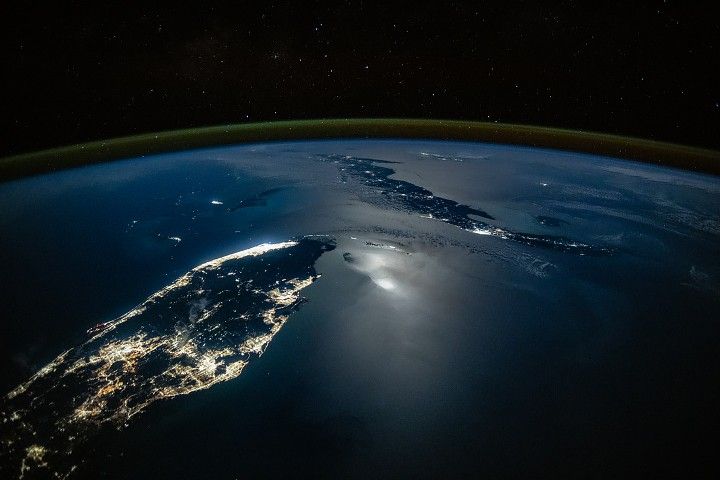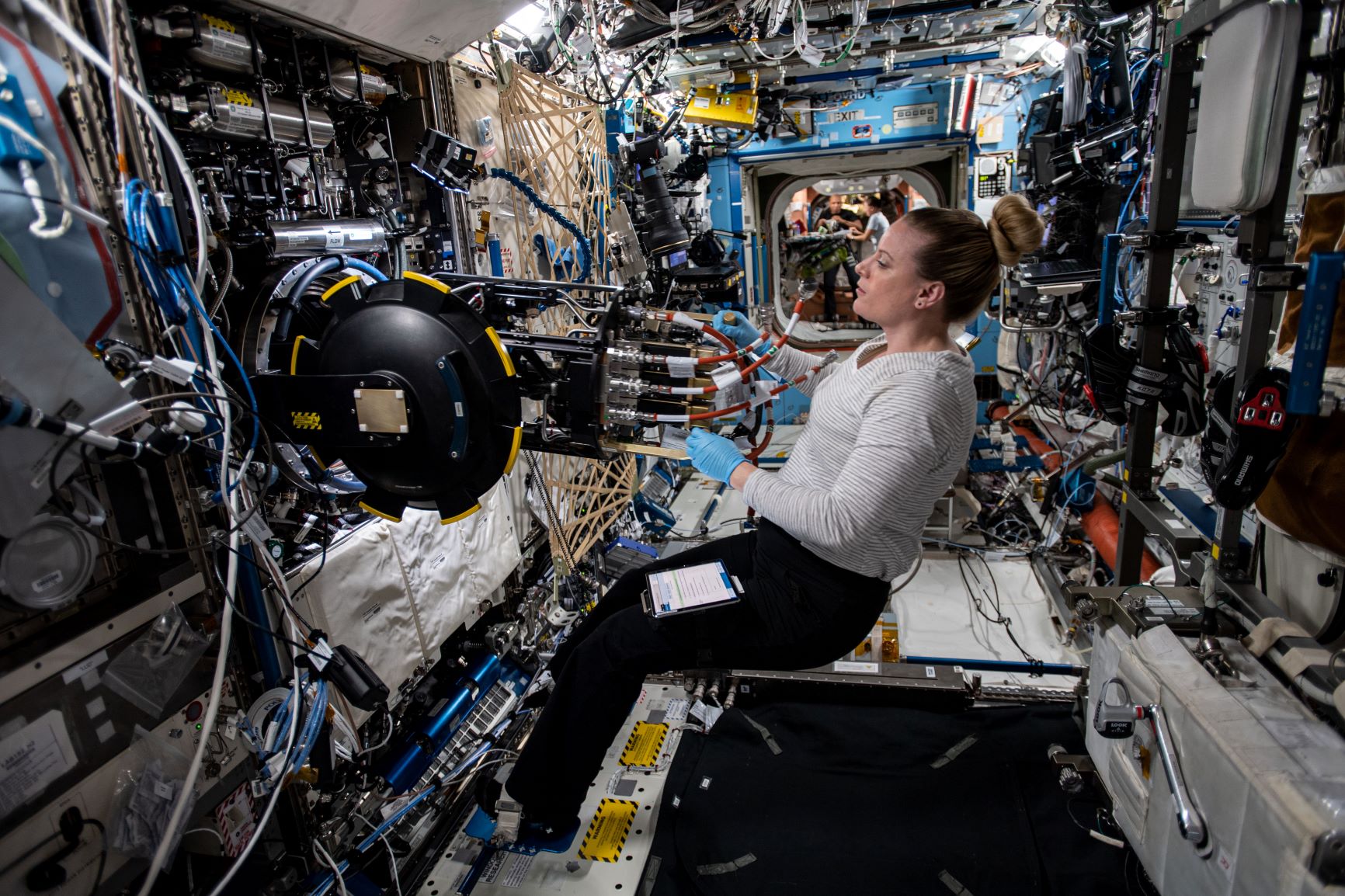
Credit: NASA
Astronauts rocket off Earth to spend months isolated in orbit some 250 miles overhead. By any measure, they have fortitude and backbone in spades.
Backbone, however, is exactly what’s at risk as astronauts float in low gravity aboard the International Space Station. For every month in space, astronauts’ weight-bearing bones become roughly 1% less dense if they don’t take precautions to counter this loss. What could be happening?
Without the continuous load of Earth’s gravity, the living tissues of bone reshape themselves. Freed from pressures of Earth’s surface, cells that build new bone slow down their work. Cells that remove old bone keep chugging along. Removal outpaces growth, producing weaker, more brittle bones. Simultaneously, muscles usually activated by simply standing on Earth start to atrophy because they no longer need to work as hard.
To learn more, NASA turns to researchers like Dr. Ashley Weaver, a biomedical engineer at Wake Forest School of Medicine in Winston-Salem, North Carolina. Weaver and her team study how spaceflight affects the network of bones and muscles in the spinal column. This network provides structural support for vital organs, including the brain, heart, and lungs.
“Spinal health is integral to postural control and facilitating the core trunk movements required for all activities on mission,” explained Weaver. “So, it’s crucial that we understand how these muscle changes are influenced by long-duration exposure to microgravity.”
Weaver’s team compares detailed scans of astronauts’ spines immediately before and after spaceflight. Techniques such as quantitative computed tomography, or “qCT,” and magnetic resonance imaging, or MRI, allow researchers to pinpoint subtle shifts in bone density and muscle size upon return to Earth.
Changes in an astronaut’s qCT scans, for example, reveal the degree to which spaceflight hollows out bones. Changes in MRI scans reveal how much spaceflight causes muscles to atrophy, seen through the accumulation of fat tissue in the muscle and shifts in muscle size. By studying muscle and bone together, Weaver hopes to tease out their “cross-talk”— how loss of bone density affects muscles, as well as how changes in muscle function and strength influence bone density.
After scrutinizing trends found through these scans, scientists and engineers will brainstorm strategies — such as specific resistive exercises — to counter bone and muscle loss in space. These strategies may prove useful as missions stretch longer, to the Moon and Mars. On Earth, similar strategies could help people with bone diseases such as osteoporosis to strengthen their weakened spines.
Nine astronauts who each lived on the space station for more than six months have been scanned. Expedition 64 crew were among the last examined for this study. “Now that all scanning is complete, we’ re looking forward to learning what bone and muscle changes occur during space missions and how these relate to injury risk,” said Weaver.
______
NASA’s Human Research Program, or HRP, pursues the best methods and technologies to support safe, productive human space travel. Through science conducted in laboratories, ground-based analogs, and the International Space Station, HRP scrutinizes how spaceflight affects human bodies and behaviors. Such research drives HRP’s quest to innovate ways that keep astronauts healthy and mission-ready as space travel expands to the Moon, Mars, and beyond.












